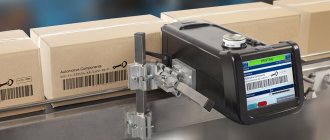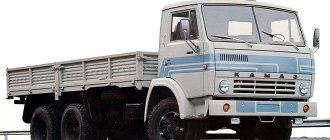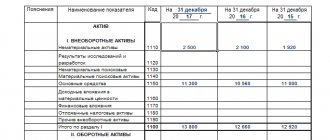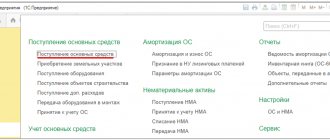High pressure washer shock absorber group
330.30.99.10 - Other transport vehicles and equipment, not included in other groups
330.30.99.10 - introduced by Amendment No. 1/2015 OKOF, approved by Order of Rosstandart dated December 25, 2015 No. 2202-st.
Classifier: OKOF OK 013-2014 Code: 330.30.99.10 Name: Other transport vehicles and equipment, not included in other groups Subsidiary elements: 0 Depreciation groups: 1 Direct transition keys: 38
Grouping 330.30.99.10 in OKOF is final and does not contain subgroups.
In the classification of fixed assets included in depreciation groups, code 330.30.99.10 is listed in the following groups:
| Group | Subgroup | Deadlines | Note |
| Fourth group | cars and equipment | property with a useful life of over 5 years up to 7 years inclusive | garage and gas station equipment |
To move from the old OKOF to the new OKOF, use a direct transition key:
| Classifier | Code | Decoding | Number of child codes |
| OKOF | 330.28.2 | Other general purpose machinery and equipment | 17 |
Code 330.28.2 is included in the classification of fixed assets:
| Group | Chapter | Depreciation periods | Note |
| Fifth group | cars and equipment | property with a useful life of over 7 years up to 10 years inclusive | air separation and rare gas installations |
The entry in the classifier with code 330.28.2 contains 17 clarifying (child) codes.
| 330.28.21 | Chambers, furnaces and furnace burners |
| 330.28.21.1 | Chambers and furnace burners |
| 330.28.22.1 | Lifting and transport equipment |
| 330.28.23 | Office machines and equipment, excluding computers and peripheral equipment |
| 330.28.23.1 | Writing machines, word processing devices, calculators and adding machines |
| 330.28.23.2 | Office equipment |
| 330.28.25 | Industrial refrigeration and ventilation equipment |
| 330.28.25.1 | Heat exchangers; industrial equipment for air conditioning, refrigeration and freezing equipment |
| 330.28.25.2 | Fans other than table, floor, wall, window, ceiling or roof fans |
| 330.28.25.20 | Fans other than table, floor, wall, window, ceiling or roof fans |
| 330.28.29 | Other general purpose machinery and equipment, not included in other groups |
| 330.28.29.1 | Gas generators, distillation and filtration apparatus |
| 330.28.29.2 | Equipment for washing, filling, capping or packaging bottles or other containers; fire extinguishers, sprayers, steam or sandblasters; gaskets |
| 330.28.29.3 | Equipment for weighing and dosing, industrial, household, etc. |
| 330.28.29.50 | Industrial dishwashers |
| 330.28.29.60 | Installations for processing materials using processes involving changes in temperature, not elsewhere classified |
| 330.28.29.70 | Non-electric equipment and tools for soft and hard soldering or welding, and parts thereof; machines and apparatus for thermal spraying |
Hierarchy diagram in the OKOF classifier for code 330.28.2:
The organization's fixed assets, depending on their useful life, belong to one or another depreciation group for profit tax purposes (Clause 1, Article 258 of the Tax Code of the Russian Federation). The useful life of the asset is determined by the organization itself, taking into account the special classification approved by the Government of the Russian Federation.
Electric forklift - what shock absorption group?
We recommend choosing the appropriate option and fixing it in the Organization’s accounting policy for tax purposes.
Depreciation groups of fixed assets in a year are determined according to new rules. The table will help you determine exactly where to place your property. And the instructions will tell you which classifier to use for depreciation groups. Urgently check whether you have correctly determined the useful life of fixed assets.
The organization purchased a truck crane from a supplier who did not account for the truck crane as a fixed asset (counted it as a product), and therefore did not draw up a transfer and acceptance certificate for fixed assets. The cost of a truck crane significantly exceeds 100 thousand.
What depreciation periods are currently established for freight transport? In what order are SPI (useful lives) approved for cars purchased before 2021? Let's look at the features of choosing a depreciation group for a truck in accordance with current legislation.
Note that most passenger cars belong to the third group. Consequently, their useful life is over three years to five years inclusive, that is, from 37 to 60 months inclusive.
Before the organization, the truck crane changed three owners. The accounting policy of the organization stipulates that the useful life (hereinafter referred to as the useful life) of fixed assets for accounting purposes is determined in the same manner as for tax accounting purposes. Until 01/01/17, most passenger vehicles also belonged to group 3, so there were no special changes in this regard for accountants. When establishing a car class, it is recommended to be guided by the international gradation (6 classes - mini A, small B, lower middle C, middle D, upper middle E, highest F).
In OKOF, the truck crane is located in the “Vehicles” section with code 310.29.10.51. According to the Tax Classification, special-purpose motor vehicles with code according to OKOF 310.29.10.5 are assigned to depreciation groups IV and V. Therefore, an organization can independently classify a truck crane into any of these groups.
Consequently, the company will recognize a greater amount of depreciation as expenses than if the car belonged to the fifth depreciation group.
That is, if it wishes, the company has the right to establish the same SPI in accounting for a car as for tax purposes under the Classification of fixed assets.
The table in the next section will help you determine which depreciation group a passenger car belongs to based on its main characteristics. The necessary information can be taken from the transport documentation - PTS (vehicle passport). If there are disagreements and ambiguities regarding the type of vehicle, you can make an official request to the manufacturer or to the territorial division of the traffic police.
The useful life for tax purposes is determined according to the Classification approved by Decree of the Government of the Russian Federation No. 1 dated January 1, 2002, as amended. dated 07/07/2016.
The distribution of passenger vehicles into appropriate groups depends on the class of the car, engine size, and purpose. Correctly determining which depreciation group a passenger car belongs to will allow the accountant to accurately calculate the amount of depreciation, and therefore accrue tax payments to the budget in accordance with the requirements of the tax legislation of the Russian Federation.
The dictionary of automotive terms also includes designations for small components that every driver needs to know. Such information will be especially valuable if you are going to carry out repairs yourself without having very deep knowledge of the car's structure. You need to remember the following terms:
- A collector is a node in which several channels are connected. In automotive terminology, the most common ones are the exhaust manifold (the place where the exhaust pipe joins the engine) and the intake manifold (the device for distributing the air-fuel mixture between the cylinders);
- An oil seal is a lubricated seal that prevents oil, gases or technical fluids from escaping from automotive components;
- A relay is an electrical automotive component. Connects electrical circuits when a certain signal occurs from the outside. Relays are used to protect the vehicle's electrical and electronics from accidental damage;
- The hub is the central part of a car's wheel that provides support for the rim and tire. Auto mechanics most often understand a hub as a mounting socket for a disc in conjunction with a brake mechanism;
- A tachometer is an automobile device that displays the speed of rotation of the crankshaft. Allows you to select the optimal moment for shifting gears, and also prevents engine damage as a result of exceeding the permissible dynamic parameters;
- Molding is a decorative strip glued to the car body. Protects the paintwork from damage due to contact with foreign objects;
- An immobilizer is the basis of a car security system. A device that does not allow starting the engine without the original ignition key;
- A roof rail is a horizontal guide on a car roof designed to secure cargo.
The article will discuss vehicle depreciation. What kind of procedure is this, why is it necessary, and how is it carried out - further. The full cost of the purchased vehicle is not written off immediately.
Depreciation of a car is carried out in order to write off its value in parts when they have worn out. It is considered if the organization purchased a vehicle or an employee was hired with his own transport.
Transmission - all units that transmit energy from the engine to the wheels. It usually refers to the clutch or torque converter, gearbox, drive shafts and axle gearboxes.
To identify the required data, you need to use the classification of fixed assets by groups from RF PP No. 1.
Motor vehicles, in accordance with the Classification of fixed assets, are classified into III-V depreciation groups.
According to the Tax Classification, special-purpose motor vehicles with code according to OKOF 310.29.10.5 are assigned to depreciation groups IV and V. Therefore, an organization can independently classify a truck crane into any of these groups. Please note that in addition to truck cranes, the Classification also contains mention of other cranes that are not classified as vehicles.
Accounting and reporting The organization purchased a truck crane from a supplier who did not account for the truck crane as a fixed asset and accounted for it as a product, therefore did not draw up a transfer and acceptance certificate for fixed assets. Before the organization, the truck crane changed three owners.
The norms of the Tax Code of the Russian Federation do not establish what kind of document confirms the useful life and time of actual operation of a fixed asset by the previous owner. Representatives of regulatory authorities explain (letter of the Ministry of Finance of Russia dated 07/05/10 N/1/448, letter of the Federal Tax Service of Russia for the city of
If a car is registered as a fixed asset, then the organization is obliged to establish a depreciation group for it in tax accounting, in accordance with which the useful life for tax purposes will be determined.
Depreciation groups of fixed assets 2019: table
The 2019 classification of fixed assets by depreciation groups is as follows:
| Depreciation group number | Useful life of OS | Example of fixed assets belonging to the depreciation group |
| First group | From 1 year to 2 years inclusive | General purpose machinery and equipment |
| Second group | Over 2 years up to 3 years inclusive | Liquid pumps |
| Third group | Over 3 years up to 5 years inclusive | Radio-electronic communications |
| Fourth group | Over 5 years up to 7 years inclusive | Fences (fences) and reinforced concrete barriers |
| Fifth group | Over 7 years up to 10 years inclusive | Forest industry buildings |
| Sixth group | Over 10 years up to 15 years inclusive | Water intake well |
| Seventh group | Over 15 years up to 20 years inclusive | Sewerage |
| Eighth group | Over 20 years up to 25 years inclusive | Main condensate and product pipelines |
| Ninth group | Over 25 years up to 30 years inclusive | Buildings (except residential) |
| Tenth group | Over 30 years | Residential buildings and structures |
Rationale
The Third depreciation group of fixed assets includes (useful life over 3 and up to 5 years, Classification of fixed assets included in depreciation groups):
Passenger cars (OKOF code 310.29.10.2).
OKOF code 310.29.10.2 includes:
310.29.10.2 Passenger cars
310.29.10.21 Vehicles with a spark ignition engine, with a cylinder capacity of not more than 1500 cm3, new
310.29.10.22 Vehicles with a spark ignition engine, with a cylinder capacity of more than 1500 cm3, new
310.29.10.23 Vehicles with a piston internal combustion engine with compression ignition (diesel or semi-diesel), new
310.29.10.24 Other vehicles for transporting people
The Fourth depreciation group of fixed assets includes (useful life over 5 and up to 7 years, Classification of fixed assets included in depreciation groups):
Motor vehicles for transporting people, other vehicles (small class passenger cars for disabled people, OKOF code 310.29.10.24)
The Fifth depreciation group of fixed assets includes (useful life over 7 and up to 10 years, Classification of fixed assets included in depreciation groups):
Motor vehicles for transporting people, other large class passenger cars ((with an engine displacement of over 3.5 l) and high class, OKOF code 310.29.10.24).
What types of passenger cars are classified as luxury cars?
Regulatory documents apply this concept (for example, OKOF, Classification of fixed assets included in depreciation groups), but do not define its meaning. The Letter of the Federal Tax Service of the Russian Federation for Moscow dated December 21, 2011 N 16-15/ [email protected] indicates the absence of the meaning of the term “high-class passenger cars” and it is recommended to use the Letter of the State Customs Committee of Russia dated February 26, 1997 N 04-30/3515 “On classification of motor vehicles". At the same time, the latest letter does not contain clear criteria for classifying cars into one class or another. It only indicates the signs that must be taken into account.
In the absence of a clear regulatory framework, the international classification of vehicles can be used. In total, there are six classes A, B, C, D, E, F. Of these, the highest class is class F (“luxury”, “executive class”):
Mini class (A) - small-sized cars, no more than 3.6 m long and no more than 1.6 m wide.
Small class (B) - small-sized cars 3.6 - 3.9 m long, 1.5 - 1.7 m wide.
Lower middle class (C). The length of the car is 3.9 - 4.4 m, width - 1.6 - 1.75 m.
Middle class (D) - length 4.4 - 4.7 m, width 1.7 - 1.8 m.
Upper middle class (E) (“business class”). Length 4.6 – 4.8 m, width over 1.7 m.
Upper class (F) (“luxury”, “executive class”). Length 4.8 m or more, width over 1.7 m.
How to determine depreciation group
To understand which depreciation group your fixed asset belongs to, you need to find it in the Classification. Having found it, you will see which group this OS belongs to.
If your OS is not named in the Classification, then you have the right to independently determine the useful life of this property, focusing on the service life specified in the technical documentation or the manufacturer’s recommendations. The established SPI will tell you which depreciation group your OS falls into.
Source
Determining the depreciation group of a passenger car
The depreciation group of a passenger car depends not only on the displacement of its engine, but also on its class.
As you can see, if the engine capacity of your new car exceeds 3.5 liters, then its depreciation group is definitely 5th. There will also be no difficulties in determining the group for inexpensive small cars: budget cars cannot get into the top class. Most likely, they will fall into the 3rd depreciation group. The most difficult thing is to decide on the shock absorption group of respectable ones with an engine capacity of up to 3.5 liters. Thus, doubts may arise, in particular, when purchasing an Audi A8 or Nissan Teana. To what class should they be classified: higher or other? There are no clear guidelines in the OS Classification.
Attention!
The class of a car is also important when classifying it as an energy-efficient OS for the possibility of using accelerated depreciation and property tax benefits (Subclause 4 of clause 1 of Article 259.3, clause 21 of Article 381 of the Tax Code of the Russian Federation).
There is a rather old Letter from the Customs Committee, in which it is recommended that executive class cars be classified as the highest class (Letter of the State Customs Committee of Russia dated February 26, 1997 N 04-30/3515). Tax authorities also refer to this Letter from the State Customs Committee (Letter of the Federal Tax Service of Russia for Moscow dated December 21, 2011 N 16-15/). What is considered an executive car is decided individually, taking into account the prestige of the brand, price, interior comfort, and so on. For example, the hybrid Lexus CT 200h has a 1.8 liter gasoline engine, and the price of the car can reach up to 1.7 million rubles. Of course, it is possible to classify such a car into the small class, but this will certainly raise questions among the inspectors. They can involve specialists from the manufacturing company as experts. And they will probably confirm to the tax authorities (as they already confirmed to us in a telephone conversation) that all Lexus cars are of the executive class, and therefore of the highest class. There is another approach: only cars with a length of over 4.9 m are classified as the highest class. It was proposed by the Ministry of Economy in 1998 (Methodological Guide RD 37.009.015-98, approved by the Ministry of Economy of Russia on June 4, 1998). And in one legal dispute, the organization managed to defend its position - referring to the short length of its car, it argued that the car did not belong to the highest class (and therefore, it did not need to be included in the 5th depreciation group (Resolution 17 AAS dated 08.12.2008 N 17AP-8900/2008-AK)). True, there are also opposite court decisions (Resolution 11 of the AAS dated February 24, 2011 in case No. A72-6500/2010). At the same time, if your car is longer than 4.9 m, but does not qualify for the highest class (it could be an inexpensive station wagon), then you can safely ignore the recommendations of the Ministry of Economy. The fact is that the Methodological Guide itself was neither registered nor published anywhere. And therefore, it cannot establish any rules of the game.
OKOF: code 330.00.00.00.000
330.00.00.00.000 - Other machinery and equipment, including household equipment, and other objects
Classifier: OKOF OK 013-2014 Code: 330.00.00.00.000 Name: Other machinery and equipment, including household equipment, and other objects Subsidiary elements: 51 Depreciation groups: 1 Code in SNA 2008: AN1133 Name in SNA 2008: Other machinery and equipment Direct adapter keys: 6
The OKOF group “OTHER MACHINERY AND EQUIPMENT, INCLUDING HOUSEHOLD INVENTORY, AND OTHER OBJECTS” classifies machines, equipment and devices that are not related to vehicles and ICT equipment.
The object of classification of other machines and equipment is each individual machine, apparatus, unit, installation, etc., including their included accessories, instruments, tools, electrical equipment, individual fencing, and foundation.
To reflect national characteristics, this group includes household equipment, i.e. items not directly used in the production process, as well as production equipment, i.e. technical items that are involved in the production process, but cannot be classified as either equipment or structures.
Grouping 330.00.00.00.000 in OKOF contains 51 subgroups.
- 330.13.92.2 — Other finished textile products
- 330.16.24.1 — Wooden containers 330.17.21.1 — Corrugated paper and cardboard and paper and cardboard containers
- 330.22.22.1 — Plastic packaging products
- 330.23.13.11.110 — Glass bottles
- 330.23.13.11.120 — Glass jars
- 330.23.13.11.130 — Glass bottles
- 330.23.13.11.140 — Other glass containers, except ampoules
- 330.23.19.23 - Glassware for laboratory, hygienic or pharmaceutical purposes; glass ampoules
- 330.23.42.10 — Sanitary products made of ceramics
- 330.23.44.11 - Porcelain products for laboratory, chemical or other technical purposes
- 330.23.44.12 - Ceramic products for laboratory, chemical or other technical purposes, except porcelain
- 330.25.11.23.112 — Structures for mine construction made of ferrous metals
- 330.25.11.23.119 - Other structures made of ferrous metals, not included in other groups
- 330.25.29.12.110 — Steel cylinders of small and medium volume
- 330.25.29.12.190 — Other metal containers for compressed or liquefied gases, not included in other groups
- 330.25.30 — Steam boilers, except water heating boilers for central heating
- 330.25.73.5 - Casting molds; flasks for metal casting; foundry pallets; foundry models
- 330.25.91.11 - Tanks, barrels, drums, canisters, boxes and similar containers for any substances (except gases) of iron, cast iron or steel, with a capacity of 50 to 300 liters, not equipped with mechanical or thermal equipment
- 330.25.92.1 — Light metal containers
- 330.25.99.21 - Safes, containers and doors, reinforced metal, armored or reinforced, boxes intended for storing money and documents, and similar products made of base metals
- 330.26.30.1 - Communication equipment, radio or television transmitting equipment
- 330.26.30.50 - Security or fire alarm devices and similar equipment
- 330.26.51 - Equipment for measurement, testing and navigation
- 330.26.52 — Watches of all types
- 330.26.60 - Irradiation equipment, electrical, diagnostic and therapeutic, used for medical purposes
- 330.26.70 — Optical devices and photographic equipment
- 330.26.8 - Magnetic and optical storage media
- 330.27.90.70.000 - Electrical signaling devices, electrical equipment for safety or traffic control on railways, tramways, highways, inland waterways, parking areas, port facilities or airfields
- 330.28 - Machinery and equipment not included in other groups
- 330.29.10.43 — Truck tractors for semi-trailers
- 330.29.10.59.116 — Truck-mounted concrete pumps
- 330.29.10.59.140 — Firefighting vehicles
- 330.29.10.59.320 — Snow blowers
- 330.29.20.21 - Containers specially designed for the carriage of goods by one or more modes of transport
- 330.30.11.31 - Fishing vessels, fish factory ships and other vessels for processing or preserving fish products
- 330.30.11.32.110 — Sea towing vessels
- 330.30.11.32.120 — River tugboats
- 330.30.11.33 - Dredgers; floating lighthouses, floating cranes; other vessels
- 330.30.11.50 - Other floating structures (including rafts, pontoons, caissons, landing stages, buoys and buoys)
- 330.30.20.31 - Vehicles intended for maintenance or repair of railway or tram tracks
- 330.30.99.10 - Other transport vehicles and equipment, not included in other groups
- 330.31.01.1 — Furniture for offices and retail establishments
- 330.31.09.11 - Metal furniture, not included in other groups
- 330.32.20 – Musical instruments
- 330.32.30.14 - Equipment, inverter and equipment for physical education, gymnastics and athletics, classes in gyms, fitness centers
- 330.32.30.15 - Other equipment, implements and equipment for sports or outdoor games; swimming pools and rowing pools
- 330.32.50 - Medical instruments and equipment 330.32.91.1 - Brooms and brushes
- 330.32.99.11 — Protective headgear and other protective equipment
- 330.32.99.53 - Instruments, equipment and models intended for demonstration purposes
In the classification of fixed assets included in depreciation groups, code 330.00.00.00.000 is listed in the following groups:
| Group | Subgroup | Deadlines | Note |
| Sixth group | cars and equipment | property with a useful life of over 10 years up to 15 years inclusive | lines for the production of containers from polymer and duplicated materials, metal and combined containers |
To move from the old OKOF to the new OKOF, use a direct transition key:
Source
Classification in accounting
Information on benefits is indicated on the basis of the relevant Decrees of the Government of the Russian Federation in force on the specified date of commissioning of the facility. The conditions for applying the benefit are described in the notes to the specific resolution.
News, analytics, forecasts and other materials presented on this site do not constitute an offer or recommendation to buy or sell any assets.
The expedition modification in the basic configuration is equipped with a kitchen with gas burners and an extractor hood, a snow melter for drinking hot water, you can also install a shower, a bathhouse and other options.
For those types of fixed assets that are not indicated in depreciation groups, the useful life is established in accordance with the technical conditions or recommendations of the manufacturers. And legal entities have the basic funds necessary for the functioning of the organization. During operation, they gradually lose their original characteristics. They can be expressed in monetary terms, but for this you need to know the depreciation groups of fixed assets. According to the law, the calculated amounts can be deducted when calculating personal income tax.
The report for the selected year (if it is less than 2017) will provide information about depreciation groups, preferences and tax benefits.
Question: When placing orders, what items should be taken into account for the costs of major repairs with the installation and installation of related equipment and systems (such as ventilation, telephone networks, etc.)? Treasury requirement: divide equipment into items in contracts - Art. 310 and work - Art. 225.
During a tax audit, it was found that initially the car should have belonged to the fifth group with a useful life of 7 to 10 years. Then the new owner is obliged to write off its cost as expenses for at least 5 years, 50,000 rubles each. per month (3 million: 5: 12).
Fixed assets, the operation of which is economically justified for 3-5 years (inclusive), are included in the third group.
OKOF: 330.28.2 - Other general purpose machinery and equipment
| Classifier | Code | Decoding | Number of child codes |
| OKOF | 330.28.2 | Other general purpose machinery and equipment | 17 |
Code 330.28.2 is included in the classification of fixed assets:
| Group | Chapter | Depreciation periods | Note |
| Fifth group | cars and equipment | property with a useful life of over 7 years up to 10 years inclusive | air separation and rare gas installations |
What is car depreciation
Depreciation of a vehicle of any format is an accounting of the vehicle as a whole and individual parts in particular. Each machine has its own resource, which decreases during operation. In the process of wear and tear, the cost of servicing the vehicle increases, and the income that the organization receives from operating the vehicle (if it is used for commercial purposes) decreases.
Each vehicle (like any other fixed asset) has its own, which depends on the depreciation group. According to the norms of the Government of the Russian Federation No. 1 of January 1, 2002, 10 groups are distinguished.
Clarification codes
The entry in the classifier with code 330.28.2 contains 17 clarifying (child) codes.
| 330.28.21 | Chambers, furnaces and furnace burners |
| 330.28.21.1 | Chambers and furnace burners |
| 330.28.22.1 | Lifting and transport equipment |
| 330.28.23 | Office machines and equipment, excluding computers and peripheral equipment |
| 330.28.23.1 | Writing machines, word processing devices, calculators and adding machines |
| 330.28.23.2 | Office equipment |
| 330.28.25 | Industrial refrigeration and ventilation equipment |
| 330.28.25.1 | Heat exchangers; industrial equipment for air conditioning, refrigeration and freezing equipment |
| 330.28.25.2 | Fans other than table, floor, wall, window, ceiling or roof fans |
| 330.28.25.20 | Fans other than table, floor, wall, window, ceiling or roof fans |
| 330.28.29 | Other general purpose machinery and equipment, not included in other groups |
| 330.28.29.1 | Gas generators, distillation and filtration apparatus |
| 330.28.29.2 | Equipment for washing, filling, capping or packaging bottles or other containers; fire extinguishers, sprayers, steam or sandblasters; gaskets |
| 330.28.29.3 | Equipment for weighing and dosing, industrial, household, etc. |
| 330.28.29.50 | Industrial dishwashers |
| 330.28.29.60 | Installations for processing materials using processes involving changes in temperature, not elsewhere classified |
| 330.28.29.70 | Non-electric equipment and tools for soft and hard soldering or welding, and parts thereof; machines and apparatus for thermal spraying |




